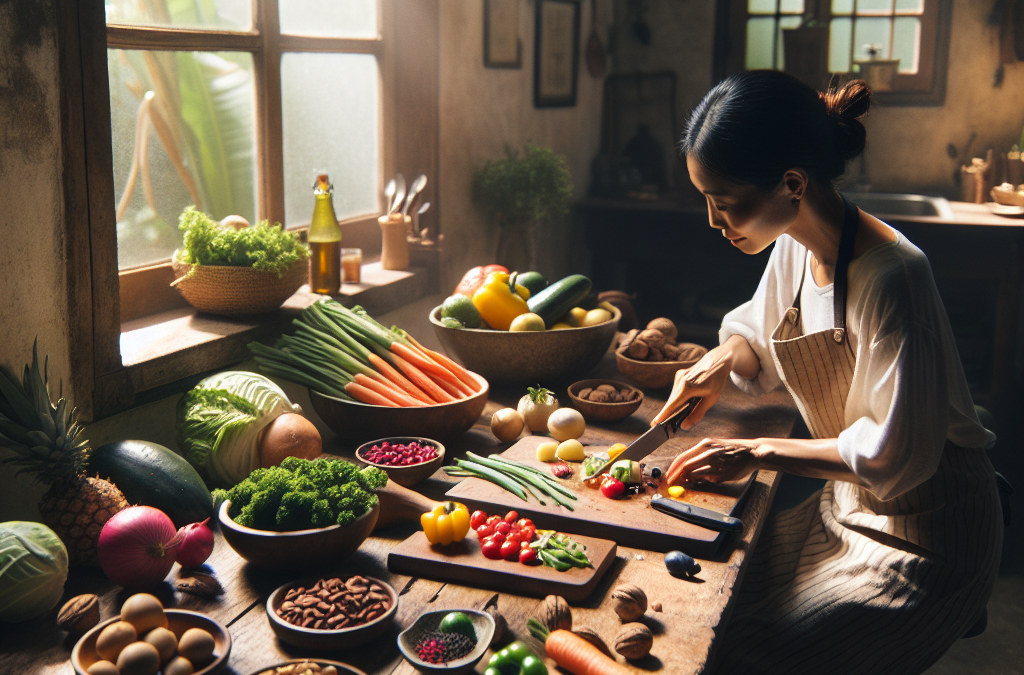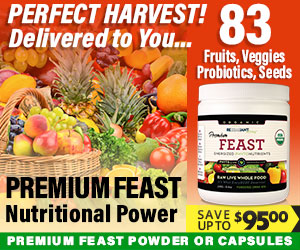Understanding Raw Organic Foods
What Are Raw Organic Foods?
So, let’s kick things off by diving into what raw organic foods actually are. In simple terms, these are foods that are not processed or cooked, and they come from organic farming. Think fresh fruits, vegetables, nuts, seeds, and whole grains. They are packed with nutrients and are usually free of pesticides and fertilizers.
The beauty of raw organic foods is their natural flavor and texture. You can really taste the difference compared to their processed counterparts. It’s like comparing a fresh mango to some sugary mango-flavored candy—there’s no contest!
From my experience, integrating raw organic foods into my diet has drastically improved my energy levels and overall health. You start to feel more vibrant, and it’s a pretty fantastic journey to be on!
Benefits of Going Raw and Organic
Now, let’s talk about the benefits. Eating raw organic foods can lead to weight loss, increased energy, better digestion, and glowing skin. Who doesn’t want that, right? Getting these nutrients in their most natural form means you’re giving your body everything it needs without the unwanted extras.
Additionally, many people find that raw organic foods help them feel more connected to their meals. There’s something special about biting into a fresh, crisp vegetable that has been grown without chemical interference. It just tastes better and feels good knowing you’re making healthier choices.
And don’t forget about sustainability! Choosing organic means you’re supporting farming practices that are better for the planet, which is a win-win. We can feel good about what we eat while also contributing to a healthier Earth.
Starting with Raw Organic Foods
If you’re looking to jump-start your journey with raw organic foods, start simple. It’s all about small changes that lead to bigger habits. Begin with incorporating a smoothie for breakfast using fresh fruits or a colorful salad for lunch. It doesn’t have to be perfect; just enjoy the process!
I remember when I first began, I felt totally overwhelmed—like, where do you even find all these ingredients? But soon, I learned to seek out local farmers’ markets and organic stores. The energy and community there make the experience so fulfilling!
And don’t stress if you slip up now and then. It’s all about progression, not perfection. Every little step in the right direction counts, so just keep going!
Grocery Shopping for Raw Organic Ingredients
Where to Shop?
When it comes to grocery shopping for raw organic foods, I’ve learned there are a few go-to places that never let me down. Local farmers’ markets offer the freshest picks, and it feels great to support local farmers. Plus, you can often find unique varieties of produce that you wouldn’t get in a regular grocery store.
Health food stores are another great option. They usually stock a wide array of organic products, from fruits and veggies to nuts and seeds. I love browsing the aisles and discovering new snacks or ingredients to try out!
And if you’re in a pinch, don’t overlook online grocery delivery options. Many stores have spaces dedicated to organic items, making it super simple to get what you need without leaving your house.
What to Look For?
When you’re shopping, it’s important to know what to look for. Always check for organic certification on labels. This means the product has been grown and processed according to strict USDA guidelines. It’s like a little stamp of approval!
Be wary of produce that looks too perfect—it might have been artificially treated. Go for those imperfectly shaped fruits and veggies; they often have the best flavor anyway. Honestly, they have so much character!
And don’t forget to check for freshness. Wilted greens or soft fruits are not only less appealing but could also indicate they’re past their prime. Keep those eyes peeled for vibrant colors and firm textures!
Making a List
Before heading out, I always make a grocery list. It’s a simple step that saves me time and keeps me focused on what I need. I typically jot down my favorite fruits, veggies, and snacks to ensure I don’t miss anything essential.
When crafting my list, I think about what recipes I want to try that week. Planning helps me avoid impulse buys—and believe me, I have been that person who ends up with a cart full of snacks that just don’t fit into my health goals.
Lastly, I try to keep my list varied. Choosing seasonal produce not only makes meals interesting but also supports local farmers. Freshness is key, right?
Prep and Storage Tips
Washing and Preparing Ingredients
Once I’m home from shopping, it’s all about prepping my ingredients. Washing fruits and veggies thoroughly is crucial. I like to soak them in a solution of water and vinegar to get rid of any residual pesticides. It’s a little extra step that helps ensure I’m eating clean.
After washing, I chop up a bunch of my staples. Prepping things like carrots, celery, and cucumber means I’ll have easy-to-reach snacks throughout the week. You can pair them with some hummus or guacamole, and trust me, it’s a winner!
I like to designate some time each week for this prep session. It feels therapeutic—like a mini self-care moment while also setting myself up for success in eating healthy!
Get Certified Organic Whole Food Nutrition – Nutrient Dense Supplement
Proper Storage Techniques
Storing your raw organic foods properly is just as important as prepping them. I’ve experimented with various methods and found that glass containers work best for me—they’re durable, and I can see what’s inside easily. They’ll keep my fruits and veggies fresh for longer.
An important tip I learned: store certain fruits and veggies separately. Some produce emits ethylene gas, which can hasten spoilage for others nearby. If you want your avocados to ripen nicely, place them in a paper bag with bananas. Just watch out for that magic moment when they turn perfectly ripe!
And don’t underestimate the power of keeping leafy greens dry. If they come into contact with moisture, they can quickly go limp. Use paper towels in your storage containers to absorb any excess moisture, and you’ll be set!
Getting Creative in the Kitchen
Now that you’ve got everything prepped, it’s time to get creative! Raw food doesn’t have to be boring. Smoothies, salads, and wraps can become incredibly flavorful with just a few spices and fresh herbs. I love experimenting with combinations that bring out different flavors!
I often love experimenting with raw dishes like zucchini noodles or avocado-based dips. These can easily be made with just a blender and a spiralizer, which I find super fun to use. Plus, it makes for a visually appealing meal!
Another fun way to amp up flavor is to incorporate nuts and seeds into your meals for added crunch and protein. Toss some sunflower seeds or almonds onto your salads, and you’ve got an instant upgrade!
Staying Motivated on Your Raw Organic Journey
Setting Realistic Goals
It’s easy to get gung-ho when you start your raw organic food journey, but setting realistic goals is key. I began by deciding to add one raw meal per day rather than overhauling my entire diet overnight. This allowed me to ease into it and not feel overwhelmed.
Start with small, attainable changes, like committing to having a green smoothie for breakfast or packing a raw snack for work. Building a habit takes time, so give yourself grace as you acclimate to new routines.
And be sure to celebrate small wins—trying a new recipe or sticking to your plan for a week is reason to feel proud! Always remind yourself why you started this journey in the first place.
Finding Inspiration
There are so many resources available to help keep your motivation high! I’m a big fan of following raw food bloggers and Instagram accounts where I can find recipes, tips, and tons of encouragement. Seeing their journeys really inspires me to keep going.
Joining online communities or local groups focused on raw eating can also be a game changer. Sharing experiences and recipes with others creates a supportive network where you can lean on one another during those tougher days.
And don’t forget about cookbooks! There are tons out there filled with amazing and simple raw recipes. I often flip through them when I’m feeling uninspired to get a fresh perspective.
Tracking Progress
Finally, I’ve learned that tracking my progress is hugely beneficial. Keeping a food journal or using apps to log my meals can help me see how far I’ve come along. I enjoy reflecting on what foods made me feel good and what I might want to tweak for the future.
Setting milestones, such as a 30-day raw challenge or a personal best in trying new recipes, can help keep things fresh and exciting. It adds a bit of fun to the journey as well!
Remember that any step forward is a step towards improved health. Celebrate your unique path and don’t hesitate to revise your goals as you learn and grow. This is about you and your journey!
Frequently Asked Questions
1. What are the best raw organic foods to start with?
Great question! Begin with seasonal fruits and vegetables—think apples, berries, leafy greens, and carrots. Include nuts and seeds for added protein and healthy fats.
2. How can I maintain a raw organic diet on a budget?
Buy in bulk, focus on seasonal produce, and consider shopping at local farmers’ markets. Planning meals ahead can also help reduce waste and save money.
3. Can I find raw organic foods in regular grocery stores?
Absolutely! Many grocery stores have a dedicated organic section. Just look for the USDA Organic seal, and you’ll find plenty of options!
4. How do I prevent spoilage of raw organic foods?
Wash and store your fruits and veggies properly. Keep leafy greens dry and store them in airtight containers. Use glass storage for longevity.
5. What if I don’t like raw vegetables?
No worries! You can still create delicious smoothies, dips, or raw soups that incorporate raw veggies in a tasty way. Experiment with flavors and combinations!
Get Certified Organic Whole Food Nutrition – Nutrient Dense Supplement
Related Content
- 10 Effective Strategies for Organic Nutrition for Digestion in 2025
- Best Organic Plant-Based Snacks in Great Neck, New York 11020
- Understanding the Benefits of Phyto-nutrients
- Best Local Organic Fruit Baskets in Oakview, Missouri 64118
- The Ultimate 2025 Guide to Organic Supergreens Nutrition: 7 Powerful Tips




